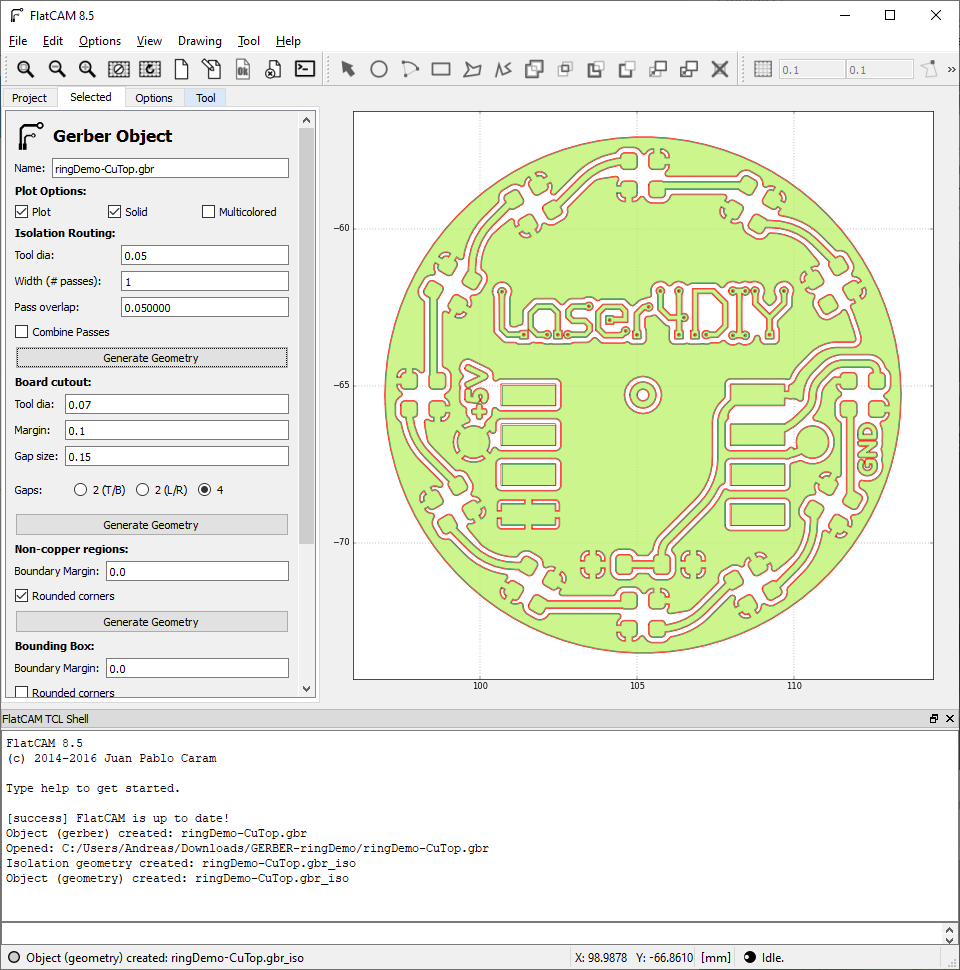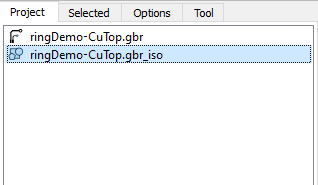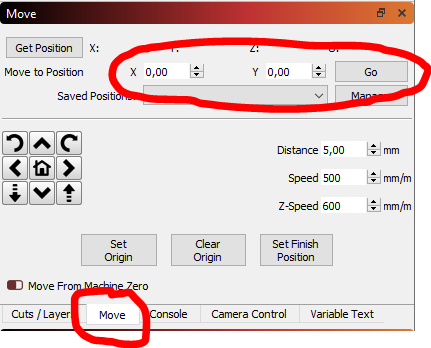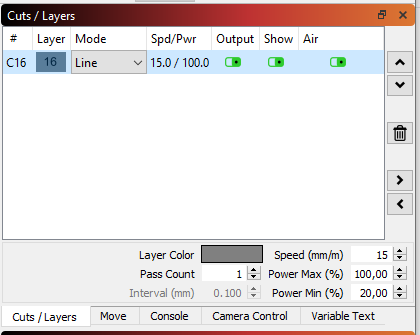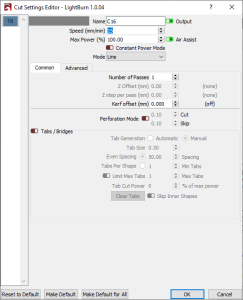...
- Press the "Create geometry" button
- The red lines around every trace indicate where the laser will ablate copper
Save SVG and
...
Clean it Up
- Go back to the Project tab
- there now should be a new "_iso" entry
- Select it
- Choose File → Export SVG
- The There now should be an SVG file exported with the tool path we just generated
- Open the SVG in Inkscape to check if everything worked as expected
- When you only see a blank white canvas, it can be is possible that all geometry is outside the document. To fix that
- press 4 (or select View → Zoom → Zoom Drawing) to change the viewport to the drawing
- to move everything onto the canvas:press Ctrl+A to select everything
- press Ctrl+X to cut it
- press 5 to view the document
- Ctrl+V to paste it
- Move the drawing on the document, make sure snapping mode is on
- Make all lines hairlines
- press Ctrl+A to select everything
- Select Object → Fill and Stroke...
- In Stroke Style tab select Hairline
- Save SVG again
...
The Laser4DIY device can be controlled by any CNC software that supports laser cutters running Grbl. We are using Lightburn. The following steps are Lightburn specific, for other software packages, corresponding steps have to be performed.
...
- You can move the toolpath to the correct position (where the PCB material lies on the XY table) by simply dragging it
- In the 'Move" section you can enter coordinates to check if the positioning is correct. Use coordinates shown on the workspace view, press the Go button and check if the table to the position you expected.
- Alternatively you can use the "Frame" feature
...
- Please note that the Laser4DIY device does not have a pilot laser. Positioning by eye cannot be done exactly therefore.
- We recommend using a PCB blank a bit larger than needed to compensate for small placement offsets.
- If you need exact placement (e.g. for two sided PCBs), you can use the stops of the table. Please make sure you have adjusted the end stops precisely if you want to rely on them
...
The output power of the Laser4DIY device varies, depending on how much power your seed laser diode emits (they are all a bit different) and how well your device is tuned. Depending on Because of that the ablation speed needs to be adjusted for your device. A speed of 15 mm/min worked well for us, but we recommend doing some small tests before starting a big PCB job. Doing 2 faster passes (2 passes with 30 mm/min each) can produce better results, but in this case backlash compensation has to be tuned very precisely so that the second pass ablates at exactly the same position again.
In Lightburn, you set the speed in the Cut/Lasers tab. :
By double clicking the speed, another dialog comes up, allowing to change the details. Leave the power setting at 100%, smaller values will not actually change the laser power. Also leave on "Output" and "Show". "Air" does not have any effect.
...
